Overview
Template variables are key to personalizing messages sent through Unify. You can use template variables to insert dynamic values into your emails, such as a person’s name, company, or job title.Inserting variables
You can insert template variables into emails you write when creating sequences in Unify. To open the template variable dropdown, click on the template variable button in the sequence builder.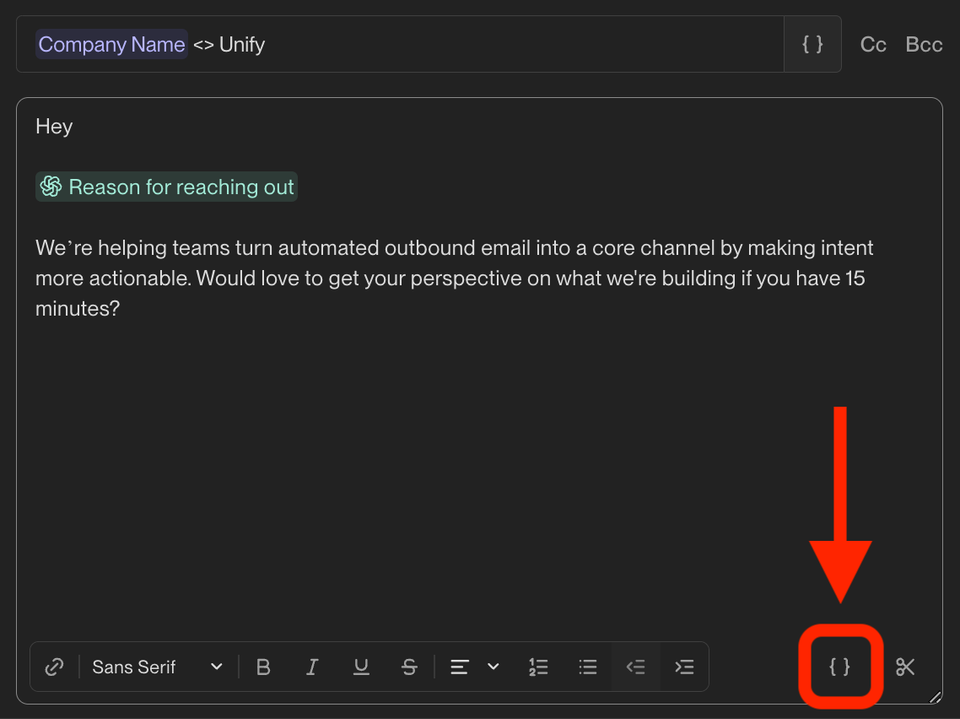
{ on your keyboard to open the template variable dropdown. Once open, you can select a variable and insert it into your email.
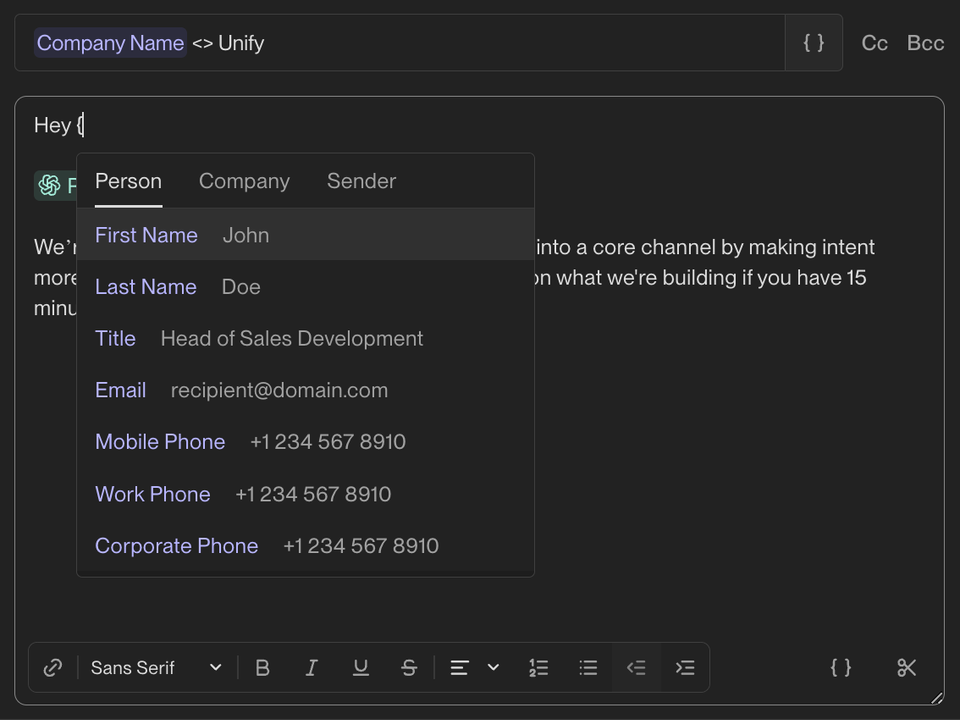
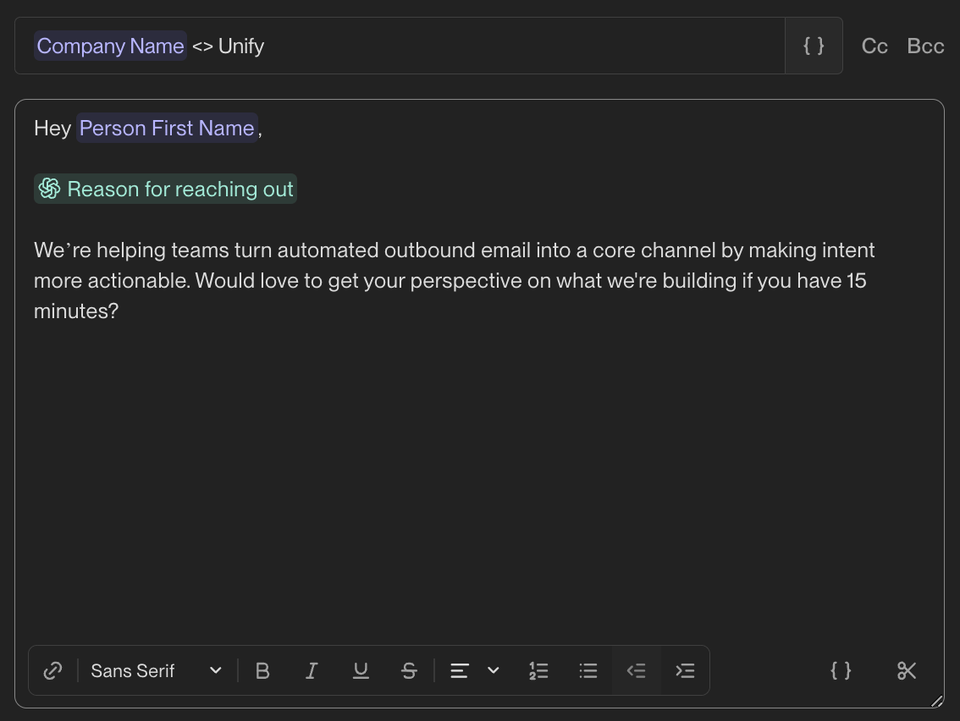
Handling missing data
Enrollment blocking
Sometimes, Unify won’t have data to populate variables used in a sequence email. In these cases, Unify will never send an email with a placeholder or missing value. Instead, Unify will block the sequence enrollment.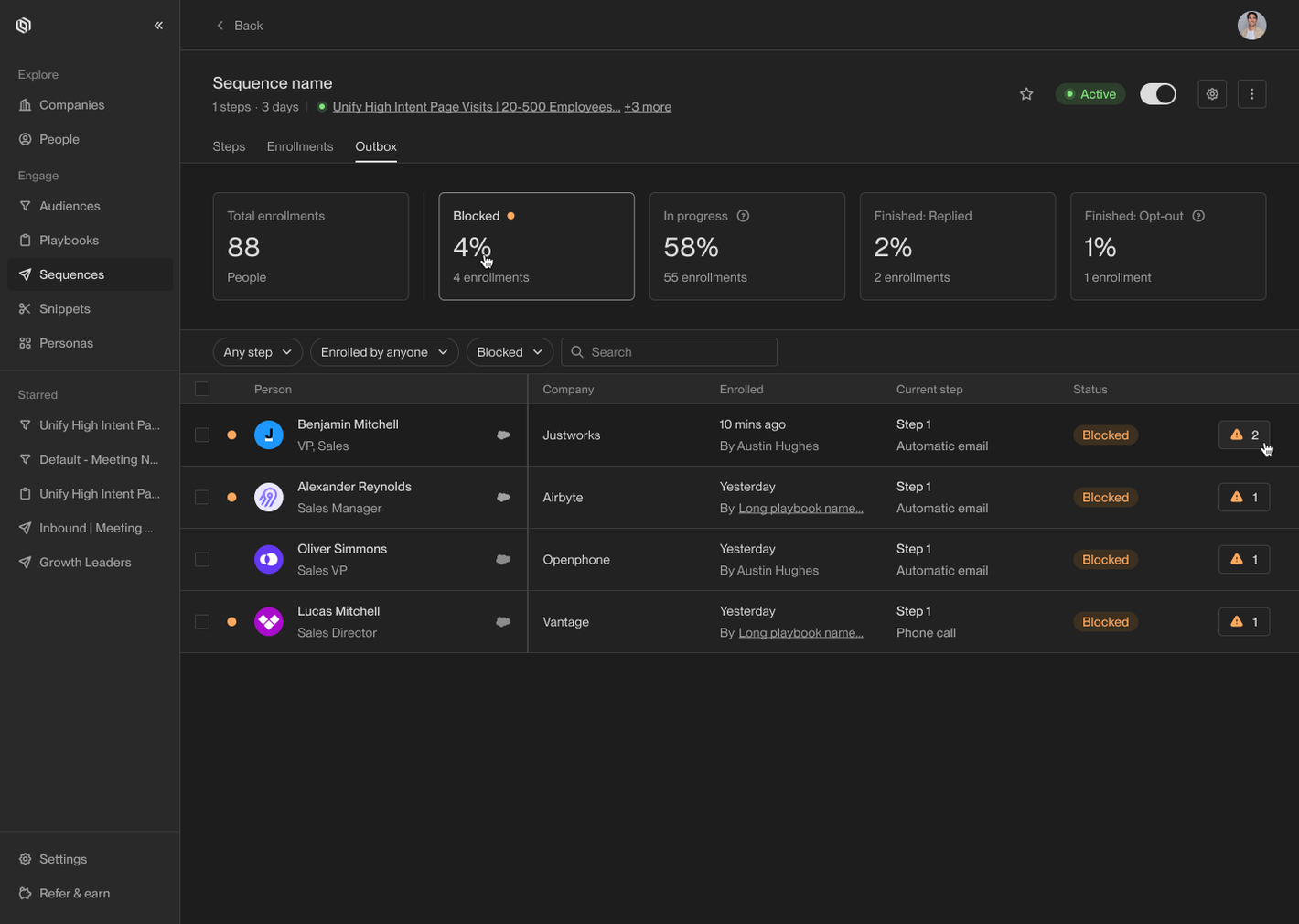
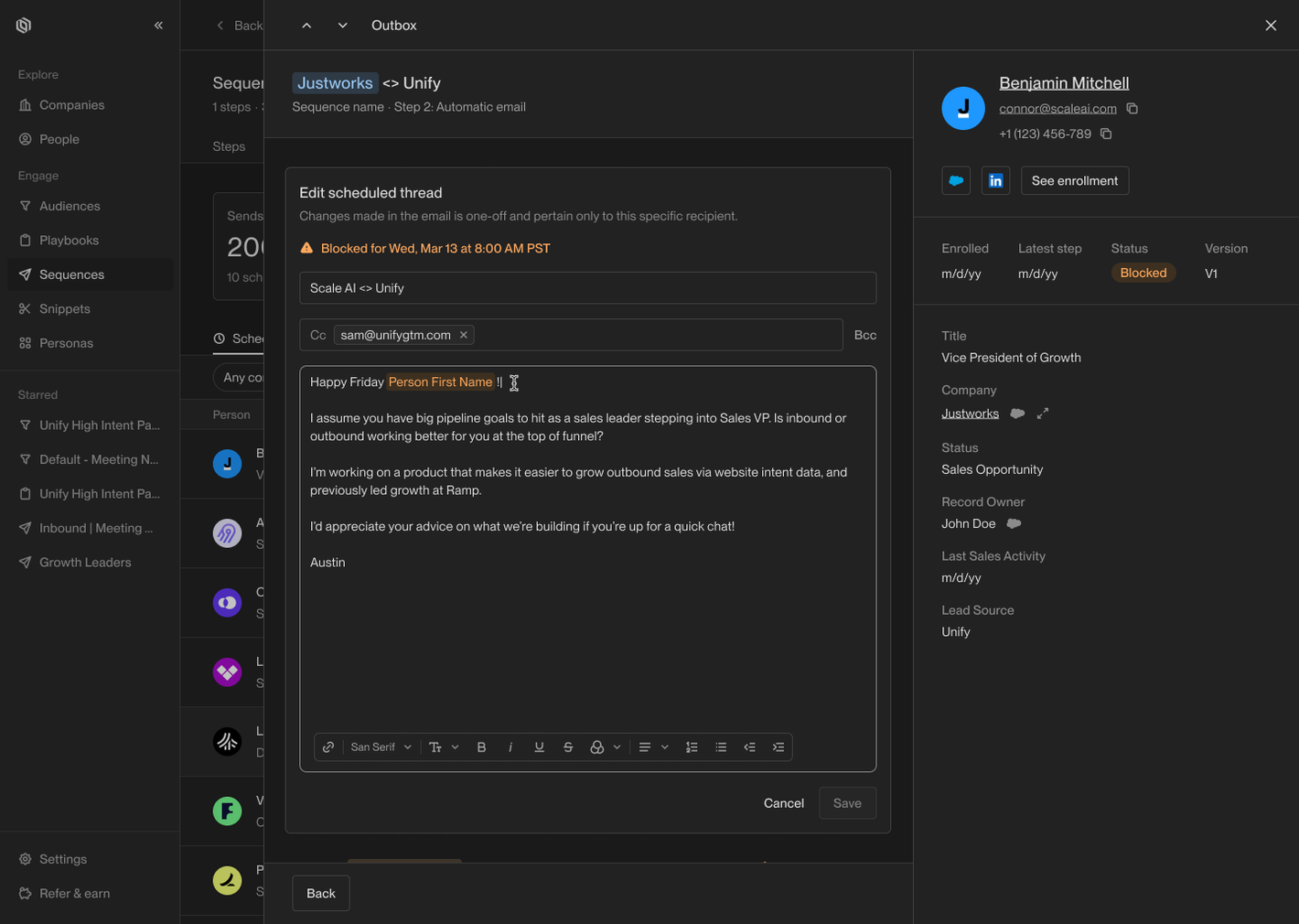
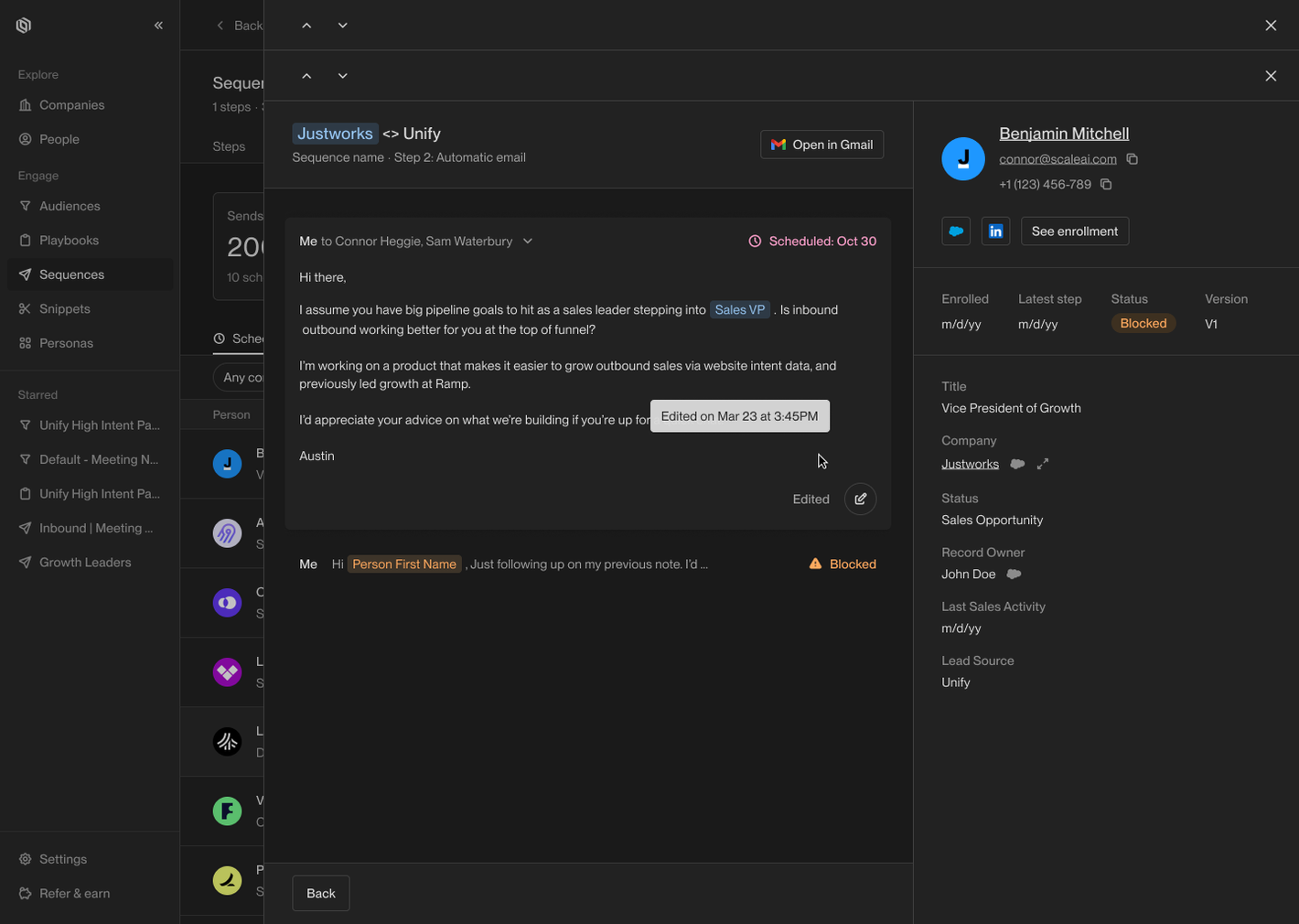
Snippets
To avoid having to manually unblock enrollments that are missing a value, it’s highly recommended that you take advantage of snippets. Snippets are reusable blocks of copy that can be inserted into messages the same as template variables. However, snippets also allow you to define fallback text which is used if any template variables are missing values.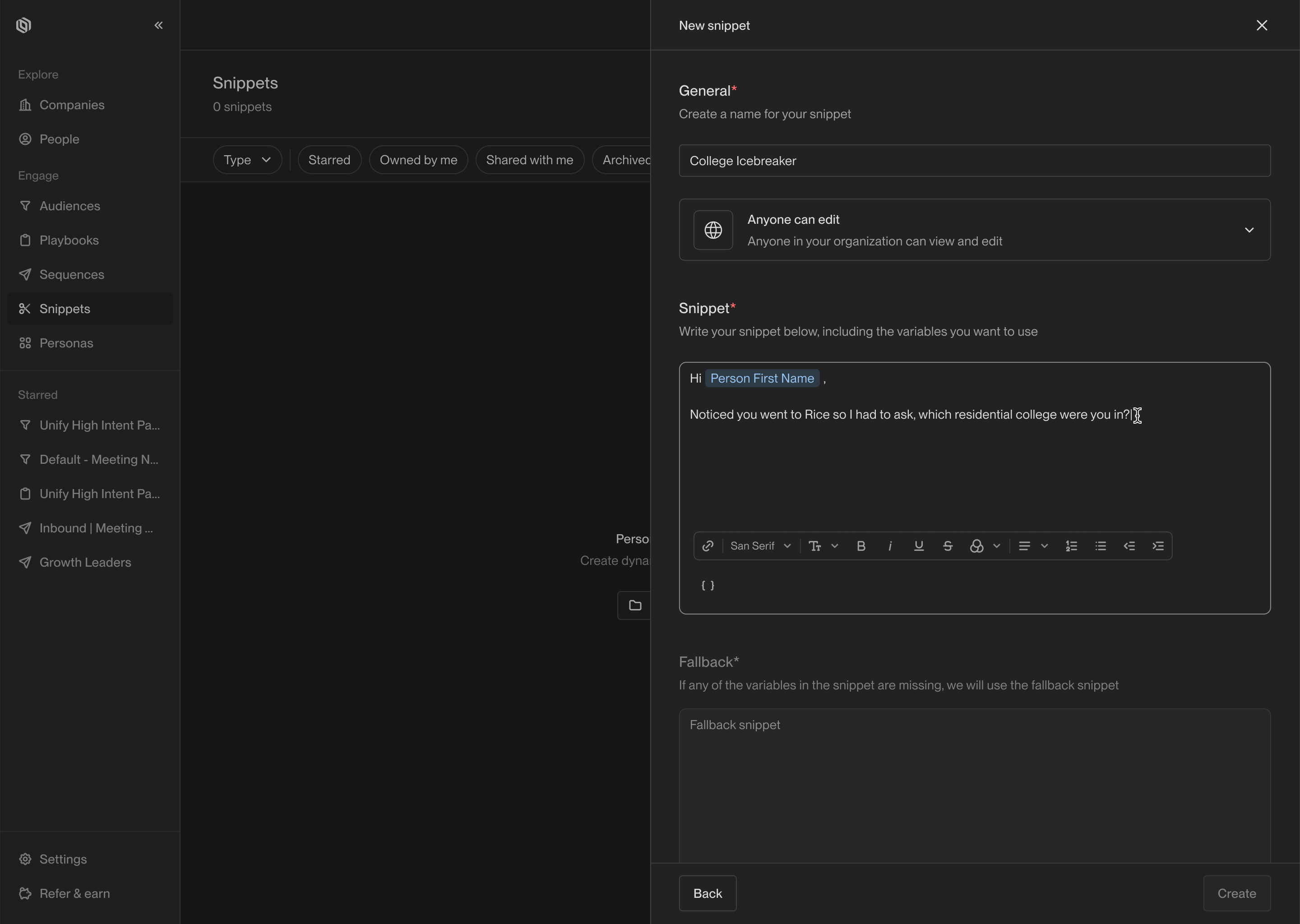
A basic snippet with a single template variable.
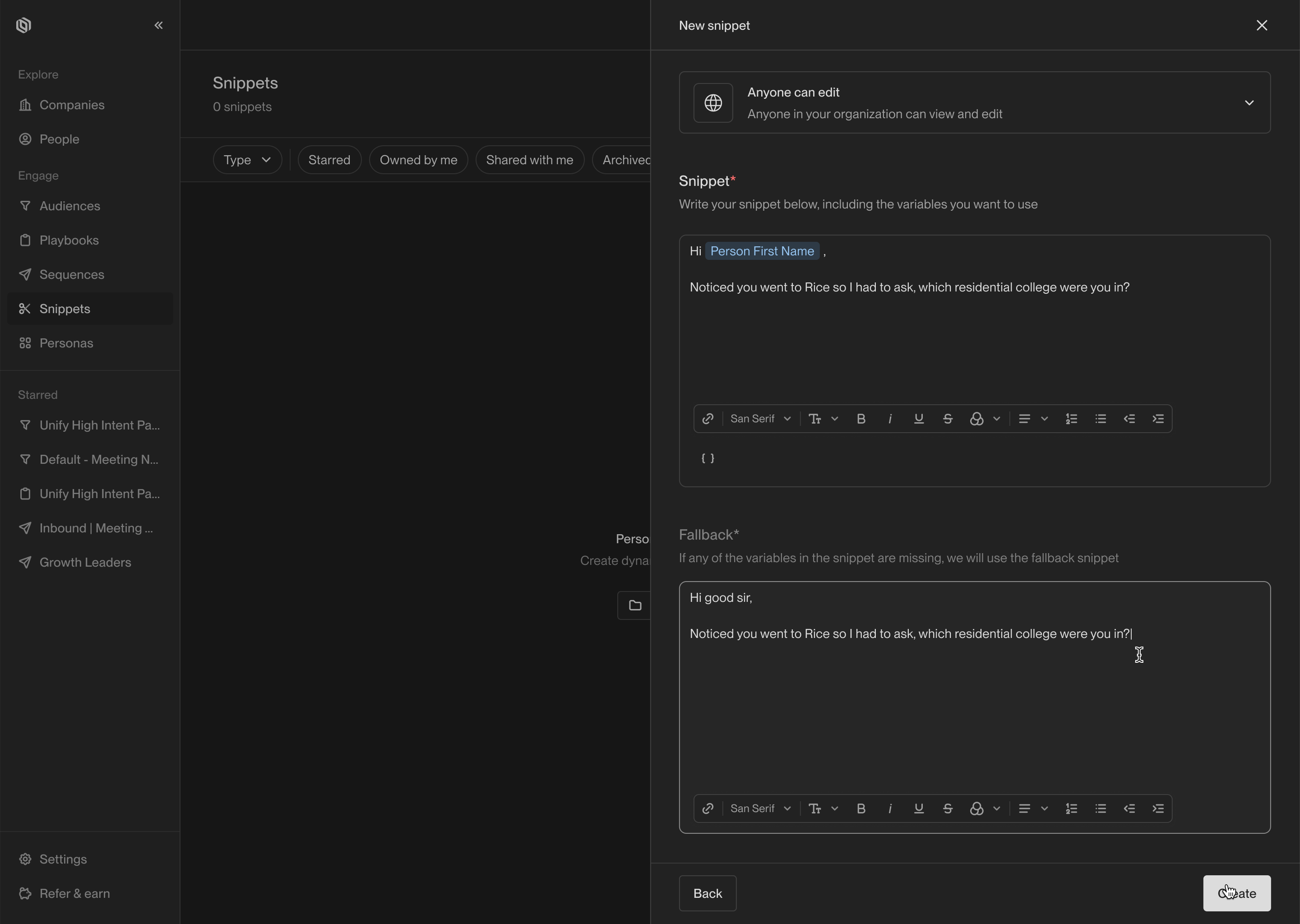
A snippet with fallback text in case the variable value is missing.